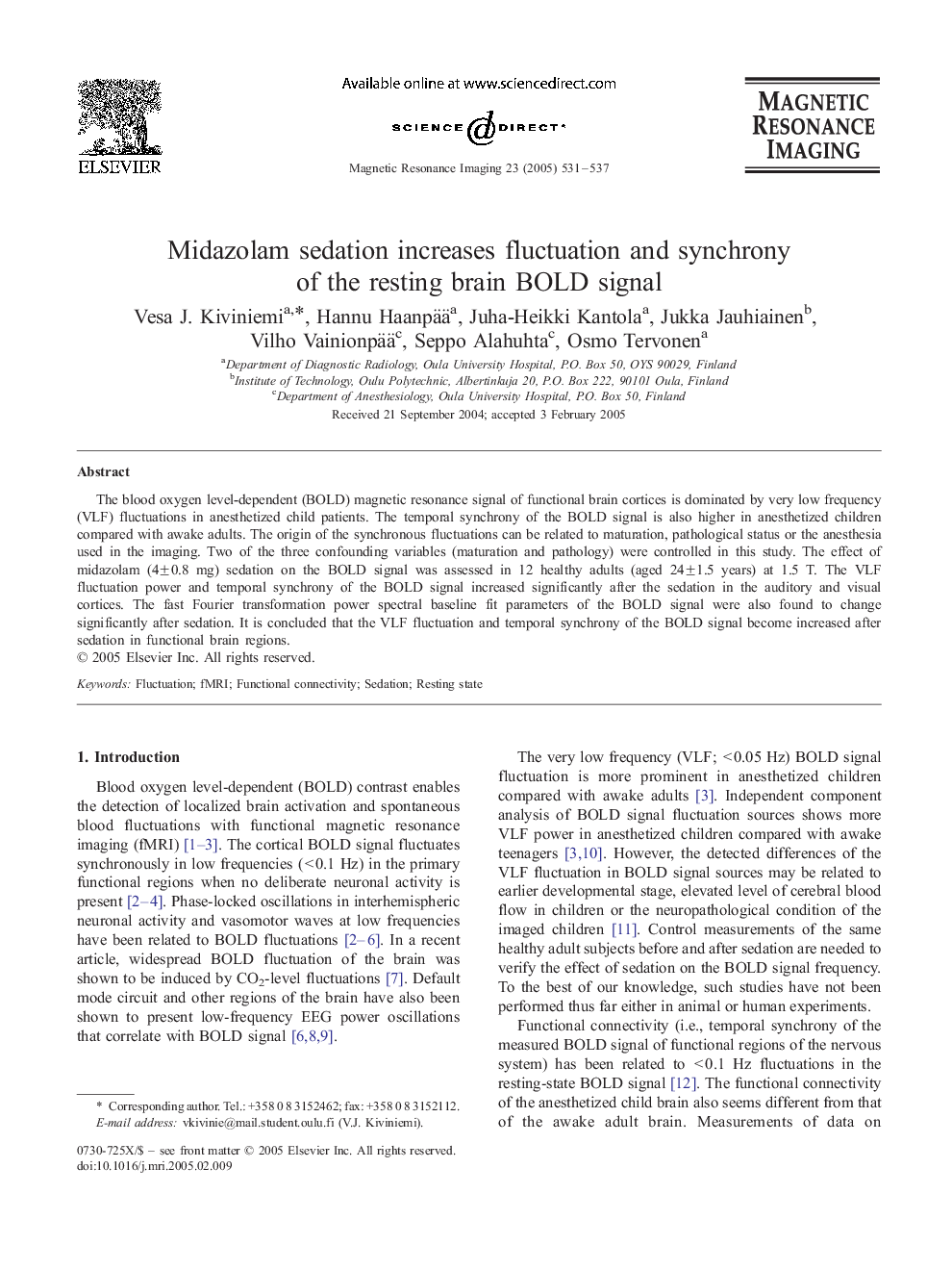| Article ID | Journal | Published Year | Pages | File Type |
|---|---|---|---|---|
| 10712872 | Magnetic Resonance Imaging | 2005 | 7 Pages |
Abstract
The blood oxygen level-dependent (BOLD) magnetic resonance signal of functional brain cortices is dominated by very low frequency (VLF) fluctuations in anesthetized child patients. The temporal synchrony of the BOLD signal is also higher in anesthetized children compared with awake adults. The origin of the synchronous fluctuations can be related to maturation, pathological status or the anesthesia used in the imaging. Two of the three confounding variables (maturation and pathology) were controlled in this study. The effect of midazolam (4±0.8 mg) sedation on the BOLD signal was assessed in 12 healthy adults (aged 24±1.5 years) at 1.5 T. The VLF fluctuation power and temporal synchrony of the BOLD signal increased significantly after the sedation in the auditory and visual cortices. The fast Fourier transformation power spectral baseline fit parameters of the BOLD signal were also found to change significantly after sedation. It is concluded that the VLF fluctuation and temporal synchrony of the BOLD signal become increased after sedation in functional brain regions.
Related Topics
Physical Sciences and Engineering
Physics and Astronomy
Condensed Matter Physics
Authors
Vesa J. Kiviniemi, Hannu Haanpää, Juha-Heikki Kantola, Jukka Jauhiainen, Vilho Vainionpää, Seppo Alahuhta, Osmo Tervonen,
